A moisture meter is an essential tool for plant care, helping gardeners determine the right time to water by measuring soil moisture levels accurately and effortlessly․
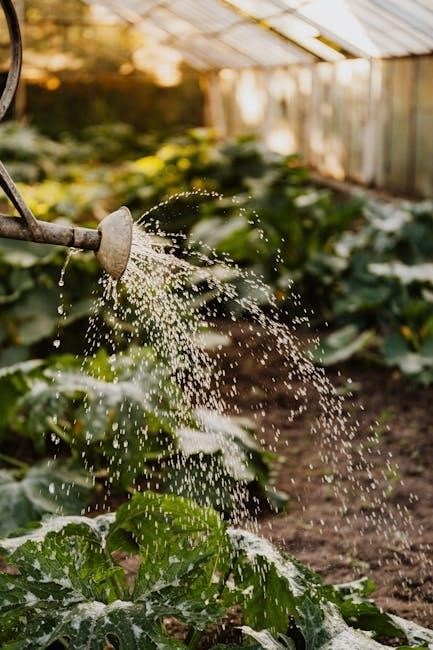
Types of Moisture Meters
Moisture meters come in various forms, including digital, analog, and multi-parameter models․ They measure soil moisture, light, and pH levels, offering precise readings for optimal plant care․
Digital vs․ Analog Moisture Meters
Digital moisture meters provide precise, numerical readings, making it easy to determine exact soil moisture levels․ Analog meters offer a straightforward dial or needle-based display, which is simple to interpret but less specific․ Both types are effective, but digital meters are preferred for their accuracy and ease of use, especially for gardeners seeking detailed data to optimize watering schedules for their plants․
Multi-Parameter Meters (Moisture, Light, pH)
Multi-parameter meters measure moisture, light, and pH levels, offering a comprehensive understanding of plant health․ These devices help gardeners ensure optimal growing conditions by monitoring all critical factors simultaneously․ They are particularly useful for plants with specific requirements, allowing precise adjustments to soil, watering, and light exposure, thereby promoting healthy growth and preventing potential issues caused by imbalanced environmental conditions․
Non-Electric vs․ Electric Moisture Meters
Non-electric moisture meters are simple, battery-free devices that rely on physical probes to measure soil moisture, making them low-maintenance and cost-effective․ Electric meters, on the other hand, offer digital accuracy and often include additional features like LED displays․ Non-electric meters are ideal for quick checks, while electric ones provide precise readings for more controlled watering․ Both options cater to different preferences, ensuring versatility for gardeners of all levels․
How to Use a Moisture Meter
Using a moisture meter is straightforward: simply insert the probe into the soil, and it provides a quick reading to help avoid overwatering and ensure healthy plant conditions․
Insert the moisture meter probe at the same depth as the plant’s roots to ensure accurate readings․ This usually means burying the probe up to the marked line․ For most plants, this is about 2-4 inches deep․ Proper insertion depth ensures the meter measures the moisture where it matters most․ Always refer to the manufacturer’s guidelines․ To measure moisture at varying soil depths, insert the probe gradually, starting near the surface and moving deeper․ For shallow-rooted plants, check the top 2-3 inches․ For deeper roots, extend the probe to 4-6 inches․ This method ensures you monitor moisture where it’s needed most, avoiding overwatering or dryness․ Adjust the insertion depth based on plant type and soil conditions for precise readings․ Always clean the probe between measurements; Moisture meters display readings on a scale from 1 to 4, with 1 indicating dry soil and 4 showing wet conditions․ This helps gardeners determine watering needs․ The moisture scale ranges from 1 to 4, where 1 indicates dry soil and 4 shows wet conditions․ A reading of 1 means the soil is dry and needs watering, while 4 suggests it’s saturated and may risk root rot․ A mid-range reading, around 2 or 3, typically indicates optimal moisture levels, though this varies by plant type․ Always consider specific plant needs when interpreting these readings․ Different plants require varying moisture levels for optimal growth․ For instance, succulents and cacti prefer drier soil, often thriving at a moisture level of 1 or 2, while ferns and peace lilies prefer higher moisture, around 3 or 4․ Indoor plants generally need moderate moisture, typically between 2 and 3, to prevent overwatering․ Always research the specific moisture needs of your plants to ensure the best care․ A moisture meter prevents overwatering and root rot while promoting healthy plant growth․ It ensures water conservation and takes the guesswork out of watering plants effectively․ Overwatering is a common issue that can lead to root rot, a detrimental condition for plants․ A moisture meter helps detect excess soil moisture, allowing gardeners to avoid watering when unnecessary․ By ensuring soil isn’t consistently waterlogged, plants remain healthy, roots stay intact, and the risk of rot is significantly minimized, fostering a thriving environment for plant growth and development․ Maintaining optimal soil moisture is crucial for healthy plant growth․ A moisture meter ensures roots receive adequate water without over-saturation, promoting strong root development and nutrient uptake․ Accurate readings help prevent underwatering, which can stress plants and hinder growth․ By monitoring moisture levels, gardeners can create a balanced environment, encouraging vigorous plant development and ensuring plants thrive consistently throughout their growth cycle․ Moisture meters play a vital role in water conservation by helping gardeners water plants precisely when needed․ Overwatering is a common issue that wastes water and harms plants․ By using a meter, you ensure soil moisture levels are optimal, reducing excess water usage․ This not only conserves water but also supports eco-friendly gardening practices, making it a practical tool for sustainable plant care and environmental responsibility․ Regular cleaning of the probes and proper calibration ensure accurate readings and extend the lifespan of your moisture meter, keeping it reliable for plant care․ To maintain accuracy, clean your moisture meter’s probes with a damp cloth after each use, removing soil residue․ Avoid harsh chemicals or abrasive materials, as they can damage the sensors․ For non-electric meters, ensure the probes stay rust-free․ Store the meter in a dry place to prevent moisture buildup․ Regular care extends the device’s lifespan and ensures reliable readings for your plants․ Always handle with care to maintain performance․ Calibrate your moisture meter by inserting the probe into a dry soil sample and adjusting the dial until it reads “1․” Repeat in wet soil to set the “4” mark․ For multi-parameter meters, follow the manufacturer’s instructions for light and pH calibration․ Regular calibration ensures precise readings, helping you avoid overwatering or underwatering․ This simple process keeps your meter reliable and your plants thriving; Always refer to the user manual for specific guidance․ Different plants have unique moisture needs․ Bog plants thrive in wet soil, while succulents and cacti prefer dry conditions between waterings․ Use a moisture meter to tailor care․ Indoor plants typically require consistent moisture due to controlled environments, while outdoor plants may need more frequent watering depending on weather conditions․ Use a moisture meter to ensure optimal watering, avoiding overwatering indoors and adjusting for outdoor factors like rainfall and evaporation․ This tailored approach helps maintain plant health and prevents root rot or drought stress․ Succulents and cacti thrive in well-drained soil, requiring infrequent but thorough watering․ Use a moisture meter to ensure soil dries completely between waterings, typically indicated by a low reading․ Overwatering can lead to root rot, so wait until the meter shows dry conditions․ This method promotes healthy growth and prevents common issues associated with water retention in these water-efficient plants․ Proper watering ensures they remain robust and vibrant․ Common issues with moisture meters include inaccurate readings, damaged probes, or non-responsive displays․ Regular calibration and proper cleaning can resolve many of these problems effectively․ Inaccurate readings on a moisture meter can occur due to improper calibration, dirty or damaged probes, or incorrect insertion depth․ To resolve this, ensure the meter is calibrated according to the manufacturer’s instructions, clean the probes with a soft cloth, and verify that the meter is inserted at the correct soil depth․ Regular maintenance and proper handling can significantly improve accuracy and reliability․ If your moisture meter is damaged or unresponsive, start by inspecting the probes for dirt or corrosion․ Clean them gently with a soft cloth and water․ Check for loose connections or physical damage․ If the issue persists, refer to the manufacturer’s repair guide or replace the meter․ Proper maintenance and storage can prevent such problems, ensuring accurate readings for healthy plant care․ A moisture meter is a vital tool for ensuring your plants receive the right amount of water, promoting healthy growth and preventing common watering mistakes effectively․ To maximize the benefits of your moisture meter, always calibrate it regularly and clean the probe after use․ For accurate readings, insert the probe at the recommended depth and avoid touching nearby objects․ Check moisture levels consistently, especially for plants with specific needs like succulents or bog plants․ Combine meter readings with visual observations of your plants to ensure optimal watering practices and healthy growth․ A moisture meter simplifies plant care by providing precise soil moisture readings, eliminating guesswork․ It helps prevent overwatering, which can lead to root rot, and ensures plants receive adequate hydration․ By promoting balanced watering, it fosters healthy growth and conserves water․ This tool is especially valuable for plants with specific needs, such as succulents or bog plants, ensuring optimal conditions for thriving vegetation․ It enhances overall plant care efficiency and reliability․Proper Insertion Depth for Accurate Readings
How to Check Moisture Levels in Different Soil Depths
Understanding Moisture Meter Readings
Interpreting the Moisture Scale (1-4)
Optimal Moisture Levels for Different Plants
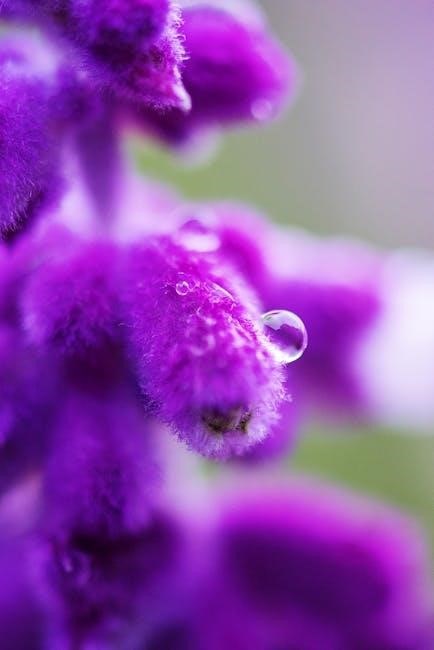
Benefits of Using a Moisture Meter
Preventing Overwatering and Root Rot
Promoting Healthy Plant Growth
Water Conservation
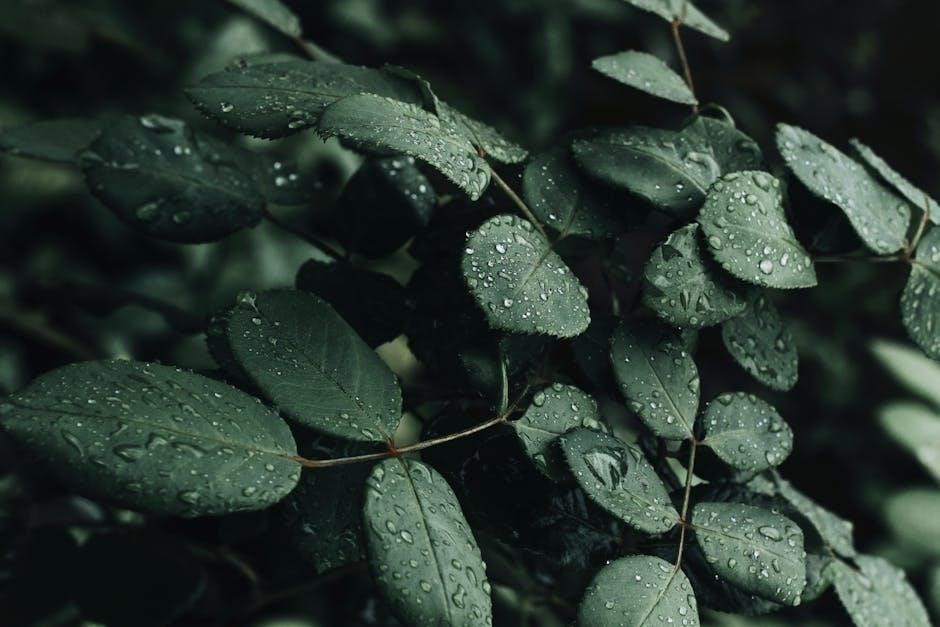
Maintenance and Calibration
Cleaning and Caring for Your Moisture Meter
Calibration Tips for Accuracy
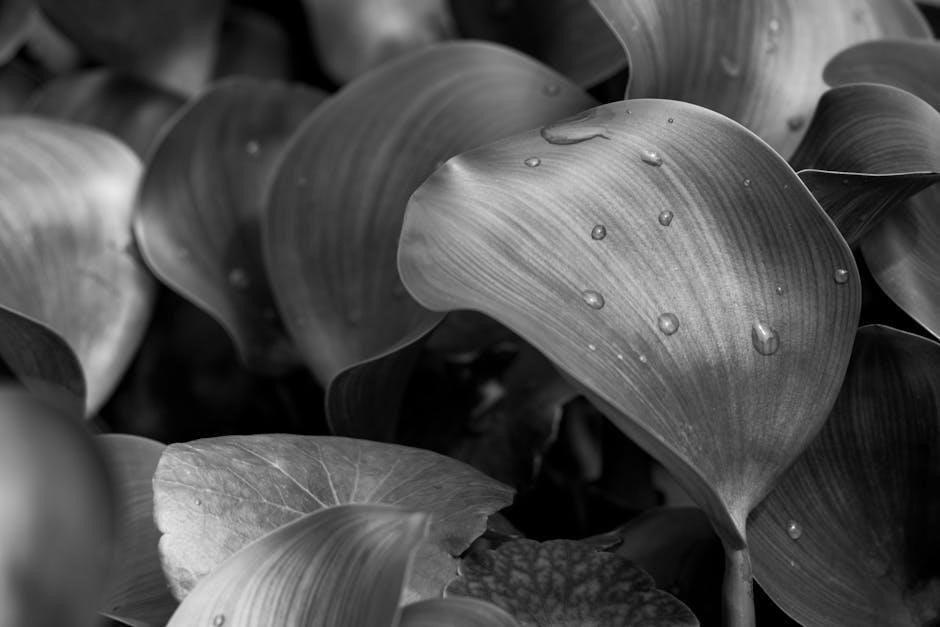
Plant-Specific Moisture Requirements
Moisture Needs for Indoor vs․ Outdoor Plants
Watering Strategies for Succulents and Cacti
Troubleshooting Common Issues
Dealing with Inaccurate Readings
Fixing a Damaged or Non-Responsive Meter
Final Tips for Effective Use
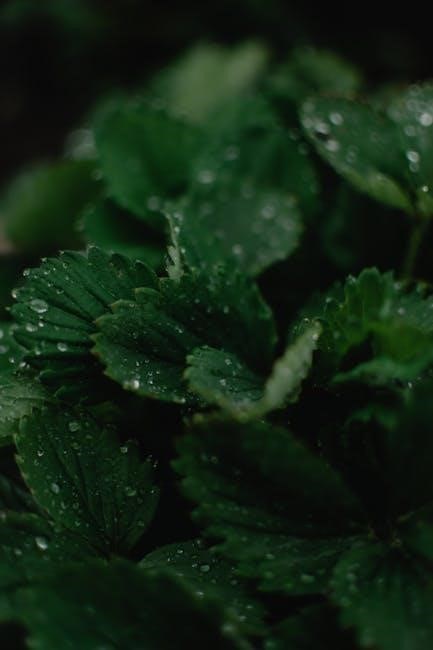
Leave a Reply